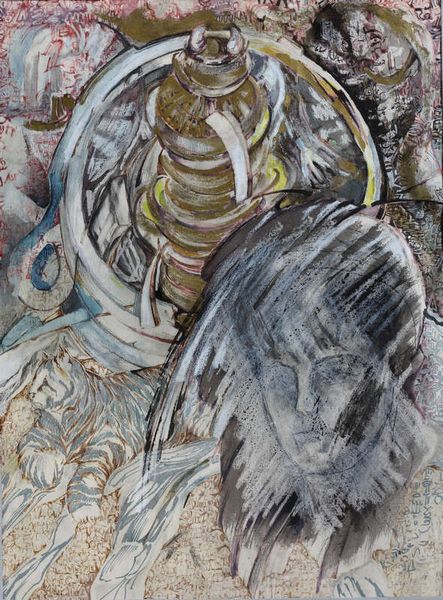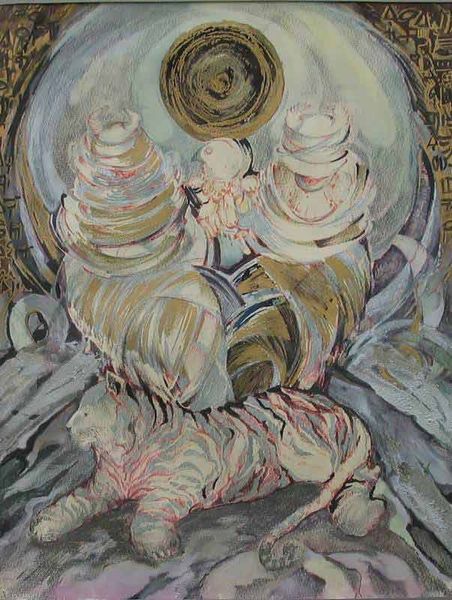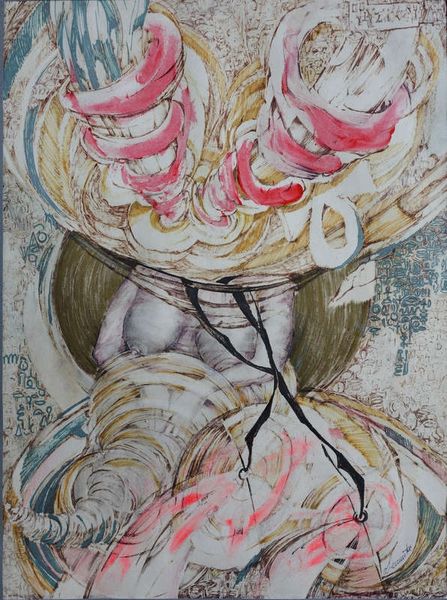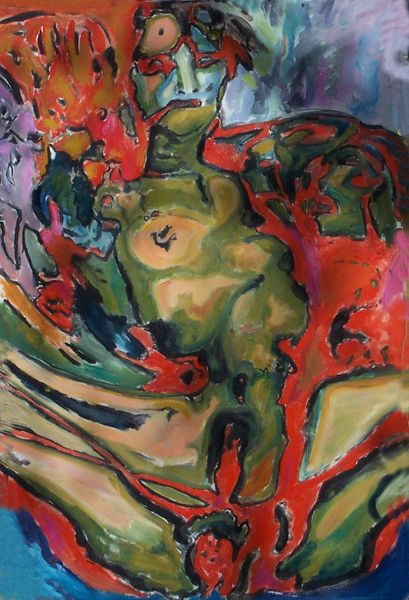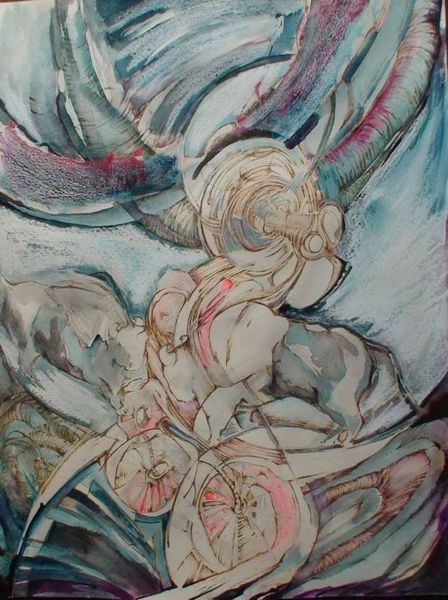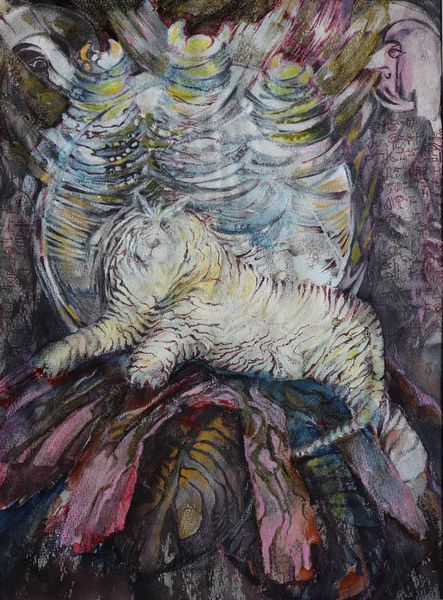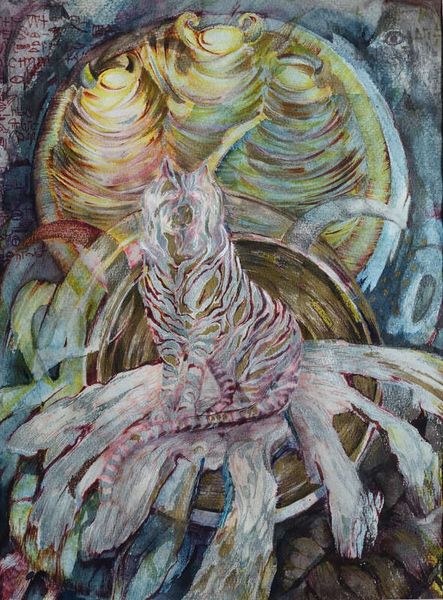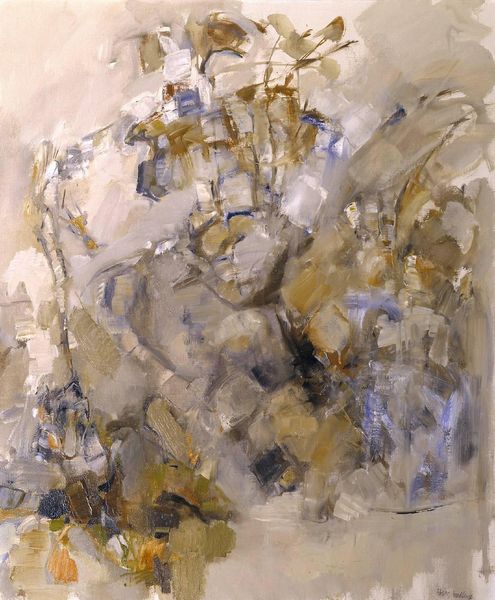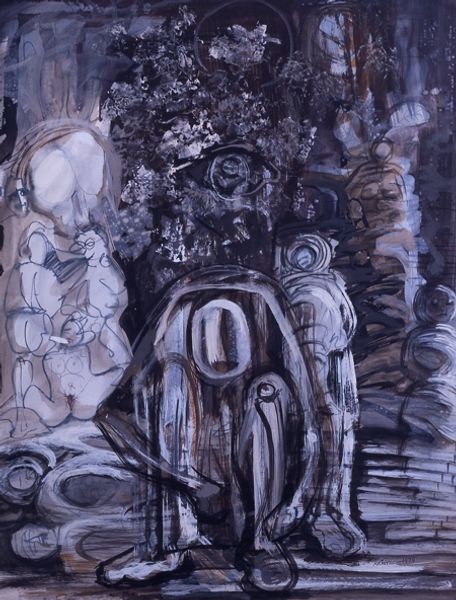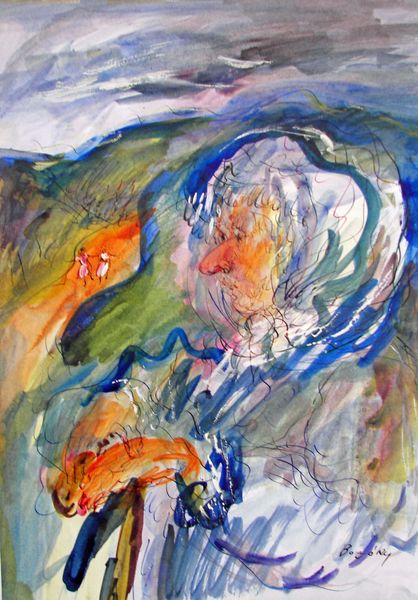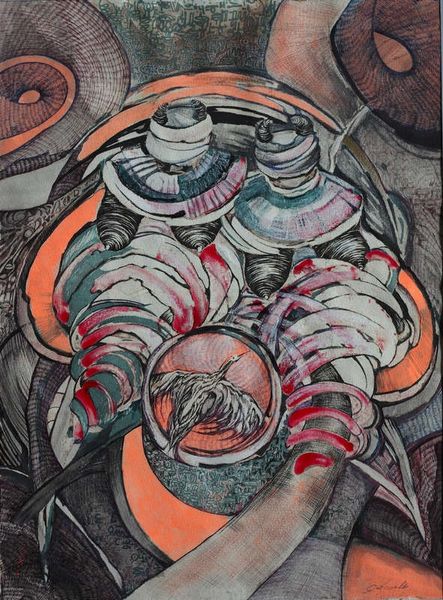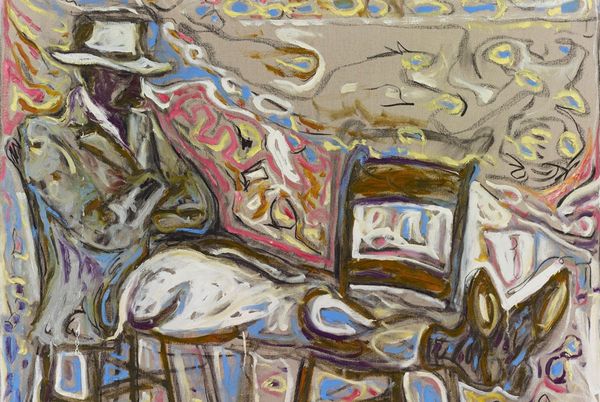
Dimensions: 46 x 34 cm
Copyright: Małgorzata Serwatka,Fair Use
Editor: This is "Dauka 1," a mixed-media piece by Małgorzata Serwatka from 1989. The swirls of muted color and layering create an intriguing, almost overwhelming texture. What do you see in this piece, especially given the socio-political context of the time? Curator: It's fascinating how Serwatka employs abstraction, isn't it? Consider that '89 marks the fall of the Berlin Wall; the artistic community across Eastern Europe was experiencing a fracturing of old structures. How do you think this painting speaks to that sense of dismantling and reforming? Editor: I hadn’t considered it in that light. I guess the breaking down of form, almost into chaotic elements, reflects that broader societal shift. It feels almost like an unraveling. Curator: Exactly. The matter-painting approach using mixed media adds another layer. These materials would have had particular resonance, maybe even limited availability, in Poland at that time, just before the transition to a market economy. Editor: That makes sense. Did galleries and museums at the time embrace this kind of raw abstraction or was there resistance? Curator: There was certainly a push and pull. Institutions were hesitant to fully endorse what was viewed as "non-conformist" art, but there was also a hunger for new forms of expression after decades of Socialist Realism. So, pieces like "Dauka 1" become a symbol of defiance and innovation. Editor: It's amazing how much historical context is embedded in what appears at first to be purely abstract forms. Curator: Indeed. Analyzing it this way helps reveal how art shapes and mirrors our understanding of history and politics. Editor: This has completely shifted my perspective on abstract art. Thanks for unpacking its significance.
Comments
No comments
Be the first to comment and join the conversation on the ultimate creative platform.
